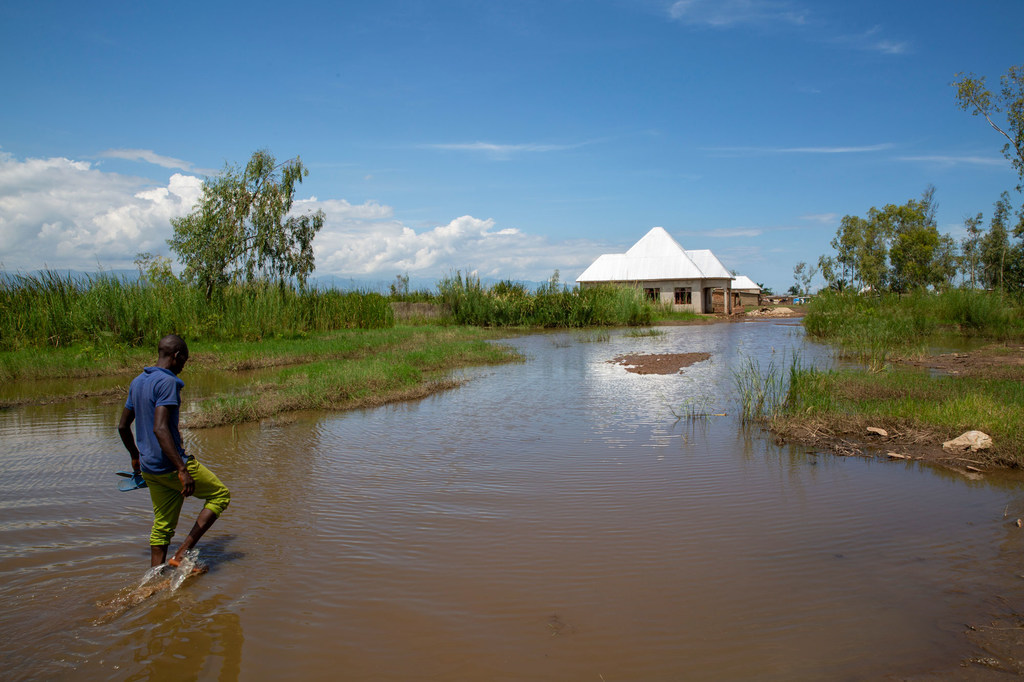half a century of extreme weather events turbocharged by man-made global warming, the World Meteorological Organization said Monday (WMO).
According to data from the UN agency, meteorological, climate and hydrological risks caused about 12,000 catastrophes between 1970 and 2021. Developing countries were the most affected, since nine out of 10 deaths and 60% of economic losses were due to climatic disturbances and extreme weather conditions.
WMO noted that least developed countries and small island developing states suffered a “disproportionately” high cost relative to the size of their economies.
“Unfortunately, the most vulnerable communities bear the brunt of weather, climate and hydrological hazardssaid WMO Secretary-General Petteri Taalas.
A man walks through floodwaters in Gatumba, Burundi, an area that is receiving unpredictable rains due to climate change.
staggering inequalities
In the least developed countries, WMO reported that several disasters in the last half century had caused economic losses of up to 30% of gross domestic product (GDP), while in small island developing states, one in five disasters had an impact “equivalent to more than 5%” of GDP, and some of them wiped out their entire GDP.
In Asia, the highest number of deaths was recorded due to extreme weather, climate and hydrological events in the last 50 years, with close to a million deaths, more than half in Bangladesh alone.
In Africa, droughts accounted for 95% of the 733,585 recorded deaths from weather disasters.
Early warnings save lives
The WMO stressed, however, that the improvement of early warning systems and the coordinated management of disasters have contributed to mitigating their deadly impact.
“Early warnings save lives,” Taalas insisted.
The UN agency also noted that recorded deaths for 2020 and 2021 were below the average for the previous decade.
Pointing to the example of last week’s strong cyclonic storm Mocha, which wreaked devastation in coastal areas of Myanmar and Bangladesh and hit “the poorest of the poor”, Taalas recalled that similar weather disasters in the past have caused “dozens of even hundreds of thousands dead” in both countries.
“Thanks to early warnings and disaster management, these catastrophic mortality rates are now, thankfully, history,” said the WMO official.
Fruit at your fingertips
The agency had previously shown that just 24 hours in advance of an imminent weather hazard can reduce damage by 30%, and described early warnings as “low-hanging fruit” for climate change adaptation, since they multiply the return on investment tenfold.
WMO published its new findings on the human and economic cost of weather disasters on the occasion of its World Meteorological Congress which opened in Geneva on Monday and focused on the implementation of the UN Early Warning for All Initiative.
leave no one behind
The initiative aims to ensure that early warning services reach everyone on Earth by the end of 2027. It was launched by the General secretary of the UN, António Guterres, at the COP27 climate change conference held in Sharm al-Sheikh in November last year.
Currently only half the world is covered by early warning systems, with Small Island Developing States and Least Developed Countries lagging far behind.
At the beginning of this year, Guterres brought together agency heads and partners to speed up the initiative’s rollout. A first group of 30 countries at special risk – almost half of them in Africa – have been identified to launch the initiative in 2023.












